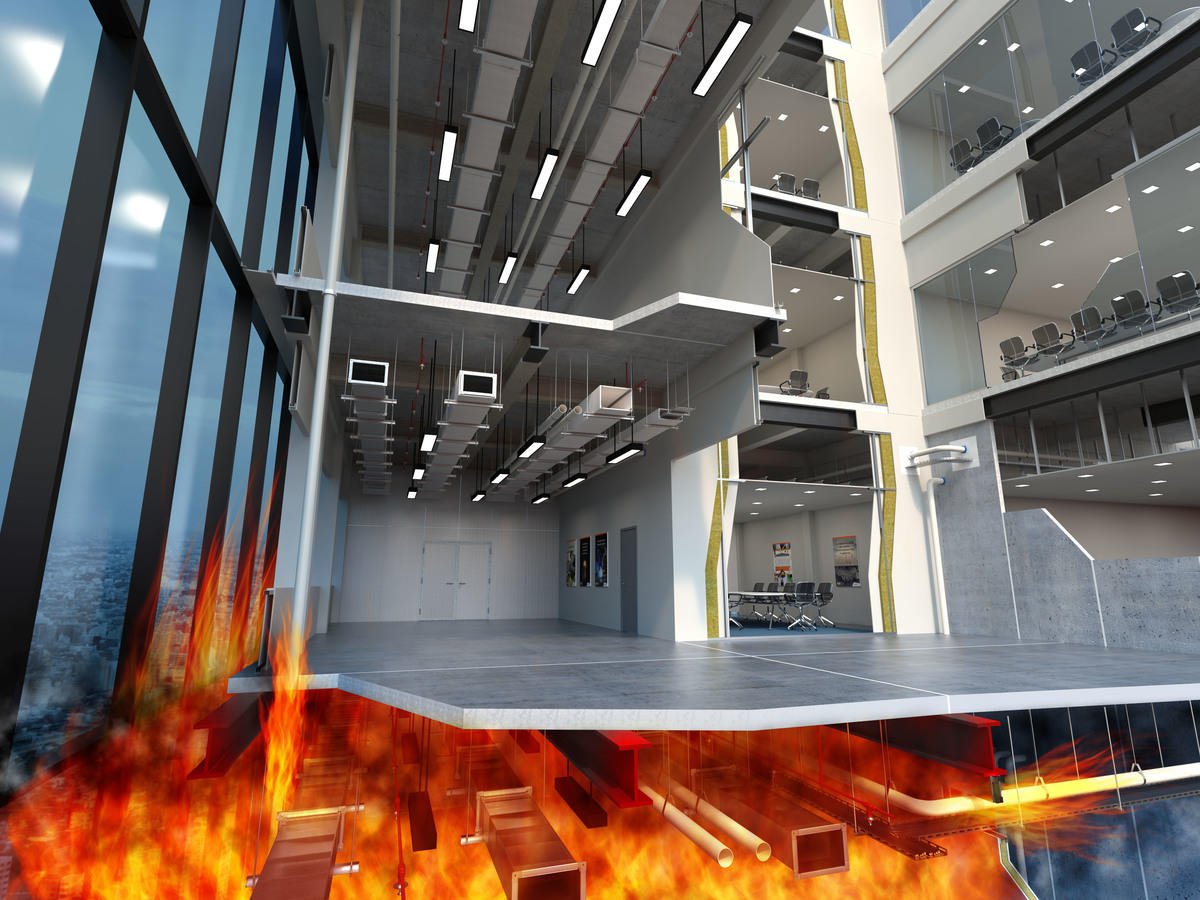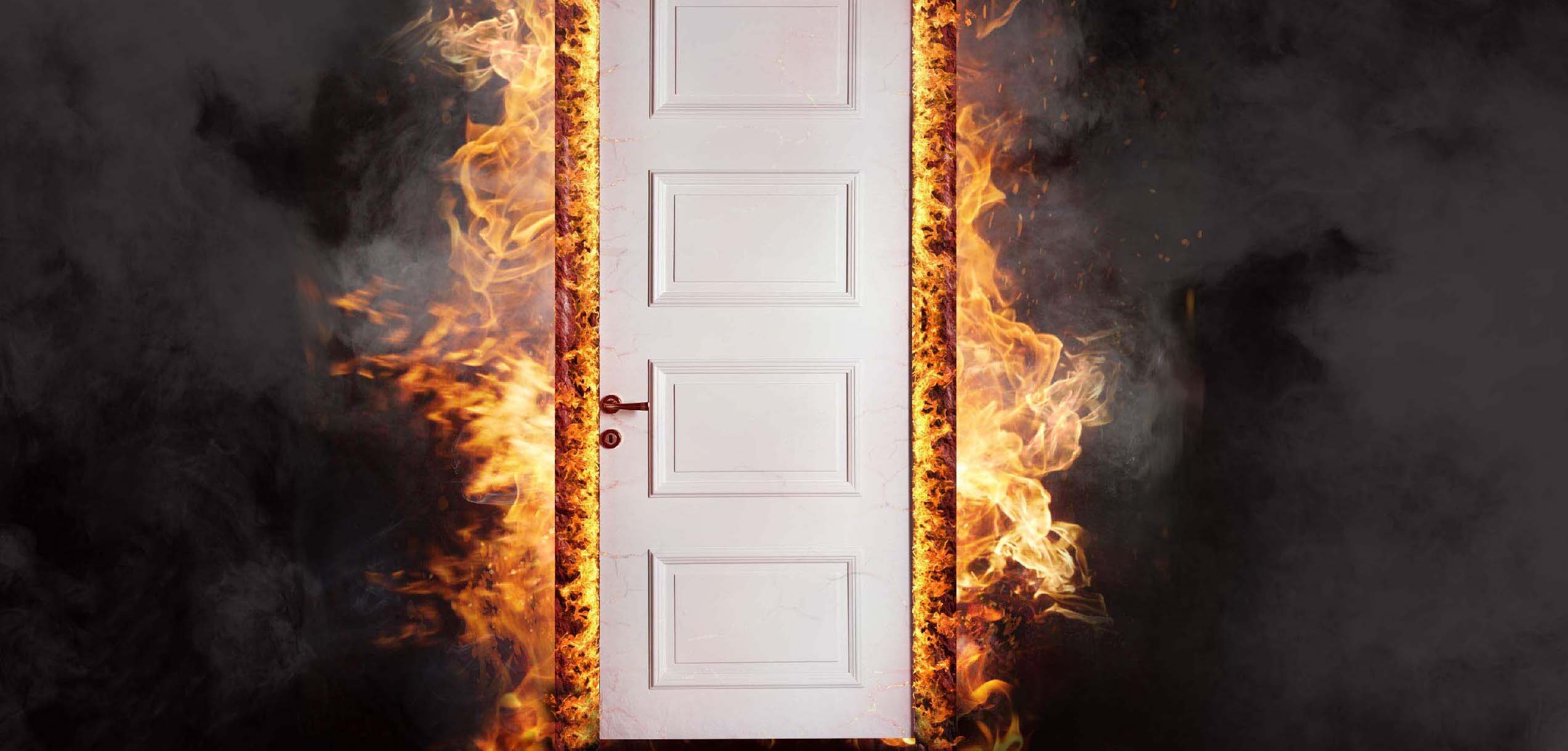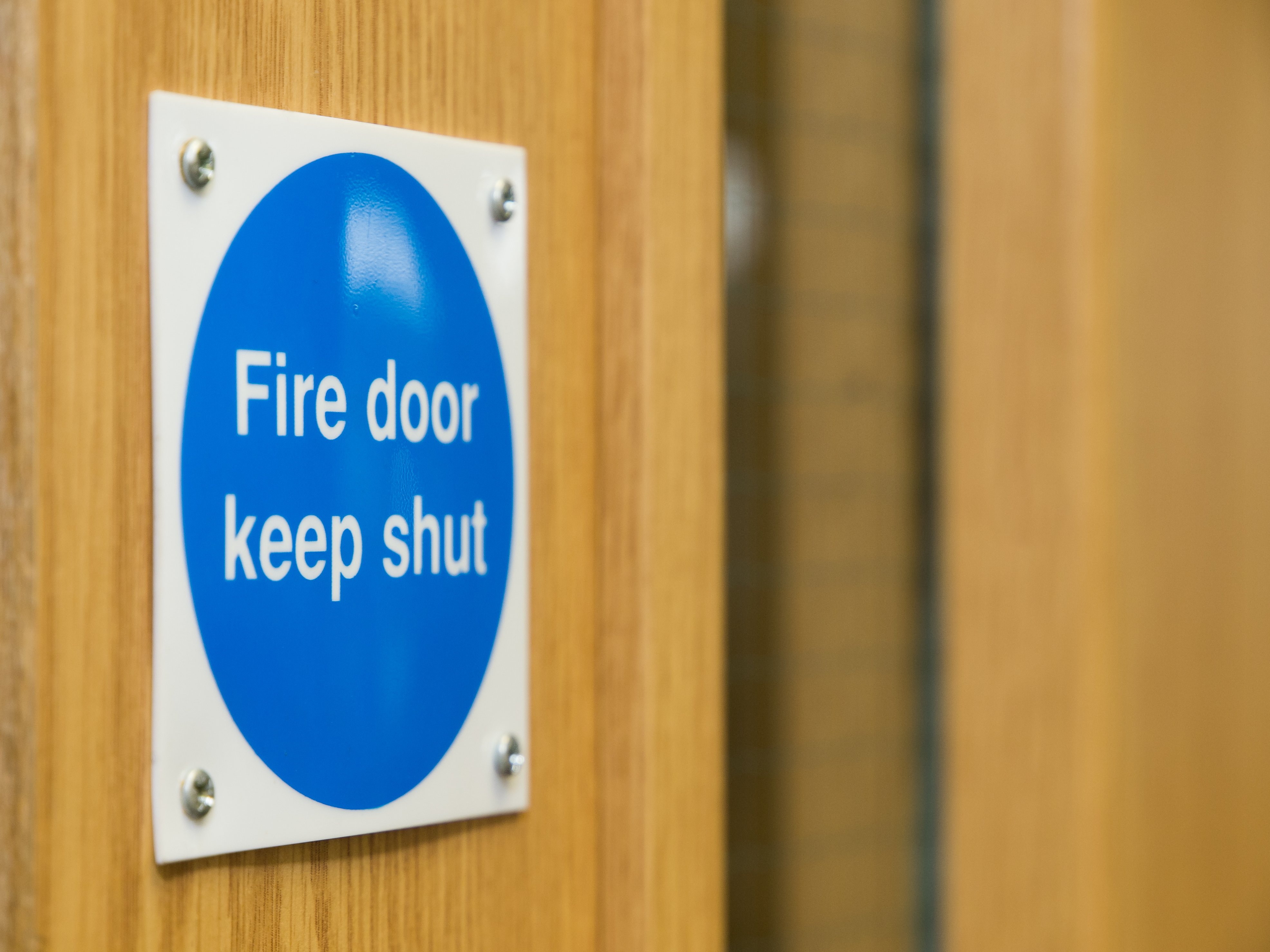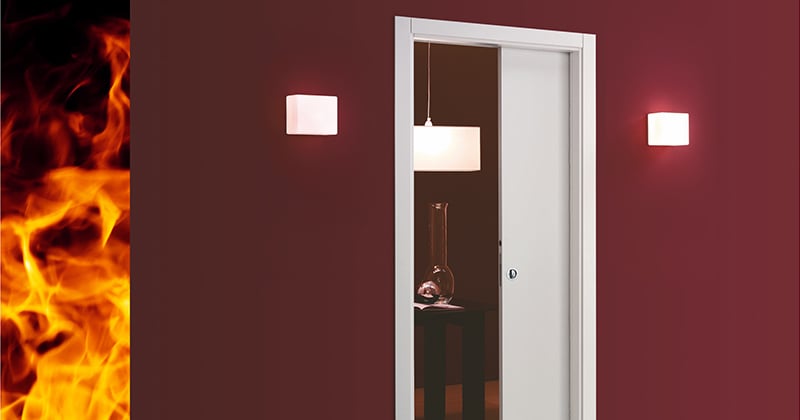
Active and Passive Fire Protection Systems: How Important Are They?
London has come a long way since the tragedy of the Great Fire of London in 1966 that engulfed the...

Let one of our representatives take you around the system.

“At the end of the day, the goals are simple: safety and security - Jodi Rell”
Each one of us through the course of our daily lives has come in contact with at least one fire door. Be it our workplace, a shopping mall, the airport or a residential building. But, how much do we really know about fire doors? How come they play such an integral part in saving lives in case of any fire-related emergency?
We have compiled a run-down list of all there is to know about fire doors and some more.

We can look at fire doors as man-made barrier that has undergone a tremendous amount of testing against all the elements that usually aid in starting or spreading fire.
The specialist nature of these doors is not to stop the fire from spreading completely but to barricade it and give just enough time to ensure the safe evacuation of the occupants whilst also providing a window for the firefighters to come to aid.

Since they are an incredible source of compartmentalising a building, they assist in containing fire or smoke within the area of impact whilst allowing safe passage to everyone who is within the building at the time.
Hence, they are an integral part of a successful passive fire protection strategy that has the potential to save human lives from any fire-related adversity.

Designed using a close-mechanism approach, all fire doors have a hydraulic mechanism or a spring load at the top which goes active during the occurrence of any fire-related incident and closes the door shut.
These specialist doors are flush with the frame. Moreover, to enhance their potential to be fire-resistant any apertures within the frame are packed with a fire-resistant sealant along with an intumescent strip at the bottom of each door which enlarges when exposed to heat.

Simply put, No! To be certified as a fire door, a manufacturer must corroborate that the door design is safe and award a certification once the door has been tested under fire and stress simulation amongst other things.

Every fire door has a separate grade. Each grade provides a unique coat of protection which provides resistance for a minimum of 30 minutes up to a maximum of 120 minutes.
→ FD30 (30 minutes)
→ FD60 (60 minutes)
→ FD90 (90 minutes)
→ FD120 (120 minutes)

As per the description rendered by The Fire Safety Order, all establishments except domestic properties which have less than 2 floors must contain at least 1 fire door at every single storey of the establishment.
Moreover, every establishment must assign the role of a ‘Responsible Person’ to an individual whose job is to ensure that the building is safe and has uncompromised active and passive fire protection systems in place.

Since building regulations in the United Kingdom are dynamic in nature, it can become quite a tedious task for operatives, contractors and the responsible person of an establishment to follow through with every specification that falls under the realm of fire safety and ensure that the installed fire doors are fully functional.
Onetrace’s cutting-edge technology delivers complete traceability and transparency, supporting operatives and contractors to digitally capture any fire door installation or inspection work conducted. Operatives or main contractors can access information regarding every job performed on any site by simply using a built-in QR Code. This eliminates the need to manually update the records whilst also ensuring that the information regarding the fire door and its certification will exist throughout the lifecycle of the building.
Are you a contractor who has been struggling to maintain daily job logs? Tap the link and let us help you.
Disclaimer: The material and information contained on this website is for general purposes only. You should not rely upon the material or information on the website as a basis for making any business, legal or any other decisions. Whilst we endeavour to keep the information up to date and correct, Onetrace Ltd makes no representations or warranties of any kind, express or implied about the completeness, accuracy, reliability, suitability or availability with respect to the website or the information, products, services or related graphics contained on the website for any purpose. Any reliance you place on such material is therefore strictly at your own risk. Onetrace Ltd will not be liable for any false, inaccurate, inappropriate or incomplete information presented on the website. Although every effort is made to keep the website up and running smoothly, due to the nature of the internet and the technology involved, Onetrace Ltd takes no responsibility for and will not be liable for the website being temporarily unavailable due to technical issues (or otherwise) beyond its control or for any loss or damage suffered as a result of the use of or access to, or inability to use or access this website whatsoever.

Active and Passive Fire Protection Systems: How Important Are They?
London has come a long way since the tragedy of the Great Fire of London in 1966 that engulfed the...

Overshot Your Budget? This Is How Onetrace Can Assist
Managing a successful business comes with a lot of nitty-gritty aspects. From budgeting to managing...

The All You Need to Know about Guide for 3rd Party Accreditation
Did you know that there are approximately 22,000 workplace fire-related incidents with...